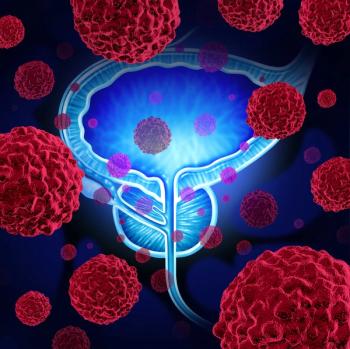
Oncology NEWS International
- Oncology NEWS International Vol 6 No 2
- Volume 6
- Issue 2
Ultrasound Advances May Expand Role in Treatment Planning
CHICAGO--Although ultrasound has been the primary imaging technique used in the assessment of the prostate gland for potential malignancy, it has been secondary to PSA assays and the digital rectal examination as a screening technique because "the cost-benefit ratio is too low to warrant its use," Matthew D. Rifkin, MD, said at the annual meeting of the Radiological Society of North America. New technological refinements of sonographic equipment, however, may allow a bigger role for ultrasound in prostate cancer in the future, said Dr. Rifkin, chair of the Department of Radiology, Albany Medical College, NY.
CHICAGO--Although ultrasound has been the primary imaging techniqueused in the assessment of the prostate gland for potential malignancy,it has been secondary to PSA assays and the digital rectal examinationas a screening technique because "the cost-benefit ratio is too lowto warrant its use," Matthew D. Rifkin, MD, said at the annual meetingof the Radiological Society of North America. New technological refinementsof sonographic equipment, however, may allow a bigger role for ultrasoundin prostate cancer in the future, said Dr. Rifkin, chair of the Departmentof Radiology, Albany Medical College, NY.
With 3D ultrasound, radiologists can manipulate images in order to obtaingreater visualization of a prostate lesion and its relationship to theseminal vessels, neurovascular bundle, and other important regional structures,information that may guide the treatment approach.
"Three-dimensional ultrasound can have major implications withour urologic colleagues on how they may treat patients," Dr. Rifkinsaid, "because it allows us to look at where the lesion is, how muchnerve-sparing can be done or how much of the prostate has to be taken out,how the apex or potentially the base is involved, and where the seminalvesicle is located."
Prostate cancer, like many other malignancies, grows faster than normaltissue and benign hyperplasia. It therefore has an increased supply ofnutrients and blood flow, he said. Color Doppler, by revealing increasedflow to a region within the prostate, can identify lesions that are notpalpable and are otherwise invisible so they may be subjected to ultrasound-guidedbiopsy.
Contrast agents currently in clinical trials can enhance the conspicuityof blood flow, particularly abnormal flow, and likewise identify a lesionthat is not palpable in an isoechoic area.
Dr. Rifkin believes these developments have enormous potential not onlyfor increasing the accuracy of detecting prostate cancer but also for helpingurologists and surgeons find the most appropriate avenue of care.
"With contrast agents, 3D, and color Doppler, we may have muchbetter visualization--better than magnetic resonance imaging and computedtomog-raphy--of the vascular supply to the prostate and any infiltrationby tumor," he said, "which may change the plan for surgical ornonsurgical intervention."
Articles in this issue
almost 29 years ago
NCI Launches Trial of High-Dose Chemo for Advanced Ovarian Canceralmost 29 years ago
'More May Be Less' in Metastatic Cervical Canceralmost 29 years ago
At 10 Years, DCIS Patients' Risk of Breast Cancer Death Is Very Lowalmost 29 years ago
Survey Finds 122 New Anti-HIV Medicines Currently Being Testedalmost 29 years ago
President Clinton Unveils National AIDS Policyalmost 29 years ago
Mammotomy May Reduce Biopsy Sampling ErrorsNewsletter
Stay up to date on recent advances in the multidisciplinary approach to cancer.

























































































